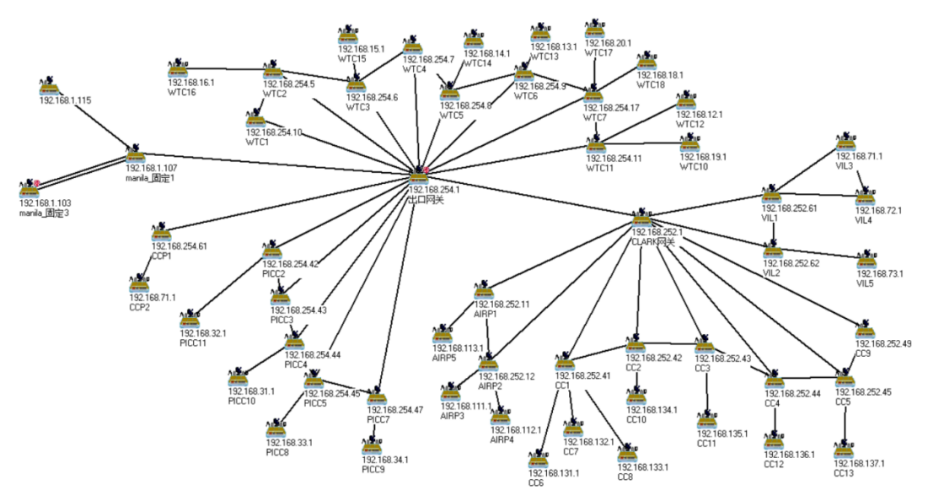The network management subsystem provides a variety of management capabilities, including authentication, users, billing, devices, topology, configuration, QoS, performance, etc.. The network management system transforms the network into a multi-purpose, multi-service, multi-user, multi-security level heterogeneous integration system, which expands the application scope and evolution potential.
Through collecting network equipment parameters and deeply analyzing network flow in the link of on-site level, regional level, and wide-area level, this system collects information such as equipment status, user perception, authentication requests, performance parameters, and malfunction, etc.. It strengthens the capability of continuous monitoring and automatic pre-warning, and achieves the purpose of enhancing network manageability. This system provides functions for emergency network management, security management, and operation monitoring, records network events, finds hidden trouble in operation and performance. The relevant information of network activities can be analyzed, stored, supervised and replayed.
Network managementsubsystem can be classified as centralized version and distributed version. The main functions are as follows:
1) User Authentication
The first function of network operation and maintenance system is AAA mechanism provided by authentication server, which supports multiple authentication methods and interfaces. When a client needs to access network resources, Network equipment will cooperate with the authentication server to compare the authentication request information of the client with the user database to determine the legitimacy, user type and access rights of the user. In the process of authentication and data communication, full encryption protocol is adopted to ensure the security of user key and prevent man in the middle attack and wireless eavesdropping. Only authenticated users are allowed to access the network, and different users have different groups and access rights in the network.
2) User Management
All users must have a legal account, which is an important certificate for user login, authorization, behavior management and log record. The user management function manages each legal user, providing new user registration, user off-line, user database management, user key management, user basic information management, user grouping management and other functions.
3) User Billing Management
The user billing management enables the network to implement the function of network service provider in the public application. The system provides the accounting strategy in terms of the online time, traffic scale, daily/weekly/monthly time billing, etc.. This function can specify different billing policies for different user groups to realize differentiated billing and batch billing for different types of users.
4) Network Element Topology
The network equipment can be automatic discovered and identified, and the whole physical/routing topology can be drawn and recorded. The network element topology supporting 3 view modes, backbone network view, panoramic view, and subnet view. Operators can freely switch among the three view modes, customize and drag the topology map, and save the topology map according to their own preferences.

Figure Network Topology Display
5) Equipment Management
Equipment management function collects equipment basic configuration details through SNMP protocol, automatically obtains the status of each network equipment, and the dynamic link and routing path of the whole network. Network equipment can be automatically discovered, added, monitored and removed from this system.
6) Configuration Template Management
Configuration template provide convenience to quickly realize batch equipmentconfiguration including modifying every configuration file in configuration template, setting up address pool, and automatically generating configuration files for multiple equipment.
7) QoS assurance
QoS assurance mechanism provides different service levels for different virtual networks, IP addresses, different business types, and different user groups. The supported QoS policies include resource reservation and traffic restriction. QoS assurance mechanism can prevent non important applications and users from occupying a large amount of network bandwidth, so as to protect the communication quality of key applications and important users.
8) Network performance monitoring
Network performance monitoring is one of the important functions to ensure the healthy operation of the network. It is completed by collecting network equipment parameters and analyzing network traffic. On the one hand, through the key quality parameters of network devices, the network performance problems can be found from the device interfaces. On the other hand, by analyzing the end-to-end network flow, the quality parameters related to the network path can be obtained, such as packet loss ratio, delay, jitter, etc. Through the collection and analysis of multiple quality parameters, the quality of key businesses and key users can be found in time, and the quality failure can be forewarned, which provides the basis for QoS policy management and network quality optimization.